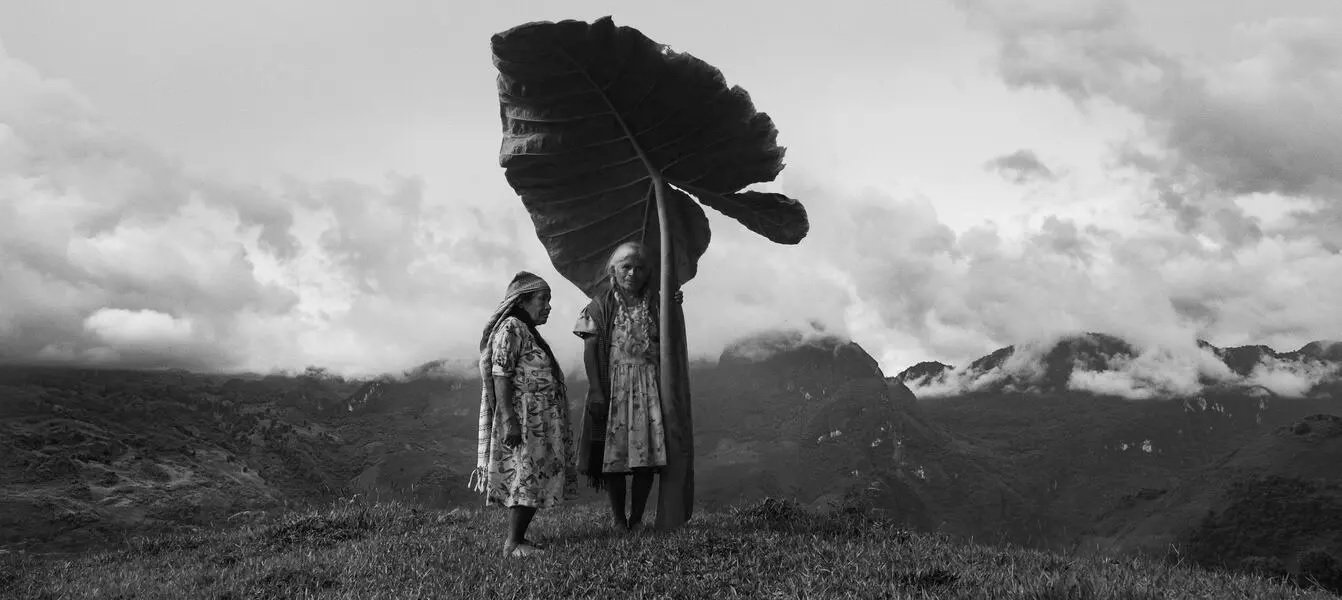The Aztec story of creation is one of birth through destruction; of life existing because death occurred. According to their myths, in the beginning, the god Ōmeteōtl (who contained both male and female forces) created itself and gave birth to four children, each representing the cardinal points. From these children sprung the elements and creatures, including a powerful sea monster called Cipactli who waged a battle against the gods that ended in its death, from which the cosmos was born.
Although one simple paragraph doesn’t do justice to the richness of Aztec mythology, one can almost hear whispers of their story of creation in Helmut Dosantos’ majestic Gods of Mexico, a piece of nonfiction that evokes the fascination with which ancient Mesoamerican civilizations viewed the universe. There is a hint of stories being passed orally from generation-to-generation in a film that is, for the most part, dialogue-free, a work that expertly combines poetry, anthropology, and cosmology.
Although it doesn’t have a traditional plot, so to speak, one can trace a retelling of the birth of the world through the images Dosantos captured throughout most of a decade. The film opens in the heavens, or at least in a blindingly bright liminal space where we identify men hard at work below. We learn that they are salt harvesters working in wide fields that look like a fragmented mirror from above, men doing the work assigned to them by deities they have come to know through nature and through the traditions they’ve preserved.
There’s even an allusion to Cipactli in the form of a snake that glides across the reflective pools, the men seemingly unaware of its existence. But don’t expect to draw any immediate connections to mythology, or the Pre-Columbian era, as the film remains rather mysterious but never impenetrable.
We learn where the images were captured (all identified by the cardinal points) and two colors––black and white––as if to remind us of the duality represented by Ōmeteōtl. Dosantos isn’t interested in facile didacticism and the film makes do without much context. The purpose of the images is to draw us in. To remind us of the divine nature within us. Its purpose is perhaps to create a space where we can allow ourselves to be in awe without imposing any meaning, where we can return to a primordial state and revel in the never-ending dance between life and death.
If the salt fields from the opening sequence represent the possibility of the universe, the last part, appropriately titled “Black” after its predominant hue, looks at death in the eye (at one point it feels as if specific images are looking right into our souls from the screen). Set in a mine where light isn’t invited, we witness workers who find pockets of joy by taking time to play games and share a break, while they harvest minerals that were most likely formed before any of them were born.
Gods of Mexico plays with the notion of time as a completely made-up concept and invites us to draw connections between the ores being mined and the stars from which the camera seems to have descended at the beginning. It is a testament to Dosantos’ skill that the film is able to celebrate Mexico and its ancient traditions without reducing them to exploitable anthropological artifacts. The subjects who appear on camera are never exoticized or viewed through an imperial gaze.
The film’s lack of information might be off-putting to some who prefer their art in an easier-to-digest form, but there is an otherworldly beauty in being invited to immerse oneself into moving images as mural-ism. History is carved in people’s faces and bodies, the film itself becoming Cipactli’s body on which endless worlds can be created. In Gods of Mexico, we are seeing the Aztec gods still hard at work, not correcting the imperfections of creation, but sitting with us and basking in its glory.
Gods of Mexico is now in limited release.

